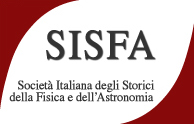Speaker
Description
The XVIII Century has been a century with profound transformations that affected the female universe traditional behavioral models. In this context, Bologna played a leading role.
In fact, during this century the memory of acknowledged women, such as Accorsa, Bitisia Gozzadini and Alessandra Giliani, who lived between the XII and XIII Centuries, re-emerged and constituted a very strong citizen myth.
Besides, thanks to Prospero Lambertini’s - future Pope Benedict XIV - skillful direction and to his project of political, social and cultural renewal and revitalization of the city, some women’s career was encouraged and supported.
Lambertini was inspired in his project by a group of progressive and advanced scientists coming from the Bolognese scene such as Iacopo Bartolomeo Beccari, Francesco Maria Zanotti, Domenico Gusmano Galeazzi, Eustachio and Gabriele Manfredi and Giovanni Antonio Galli.
Differently from the previous decades model of aristocratic feminism, a new female model was proposed. Both Laura Bassi and Anna Morandi fit perfectly into this picture: they were mothers, but also scientists who, coming from modest social and economic contexts, claimed the importance and 'public' utility of their competences.
The protagonist was the Academy of Sciences of Bologna. Here, starting from 1732, it was set up a special class of fellows called the 'Honored' that included foreigners and women such as Laura Bassi, Faustina Pignatelli, Émilie du Châtelet, Maria Gaetana Agnesi and Marguerite Le Comte.

